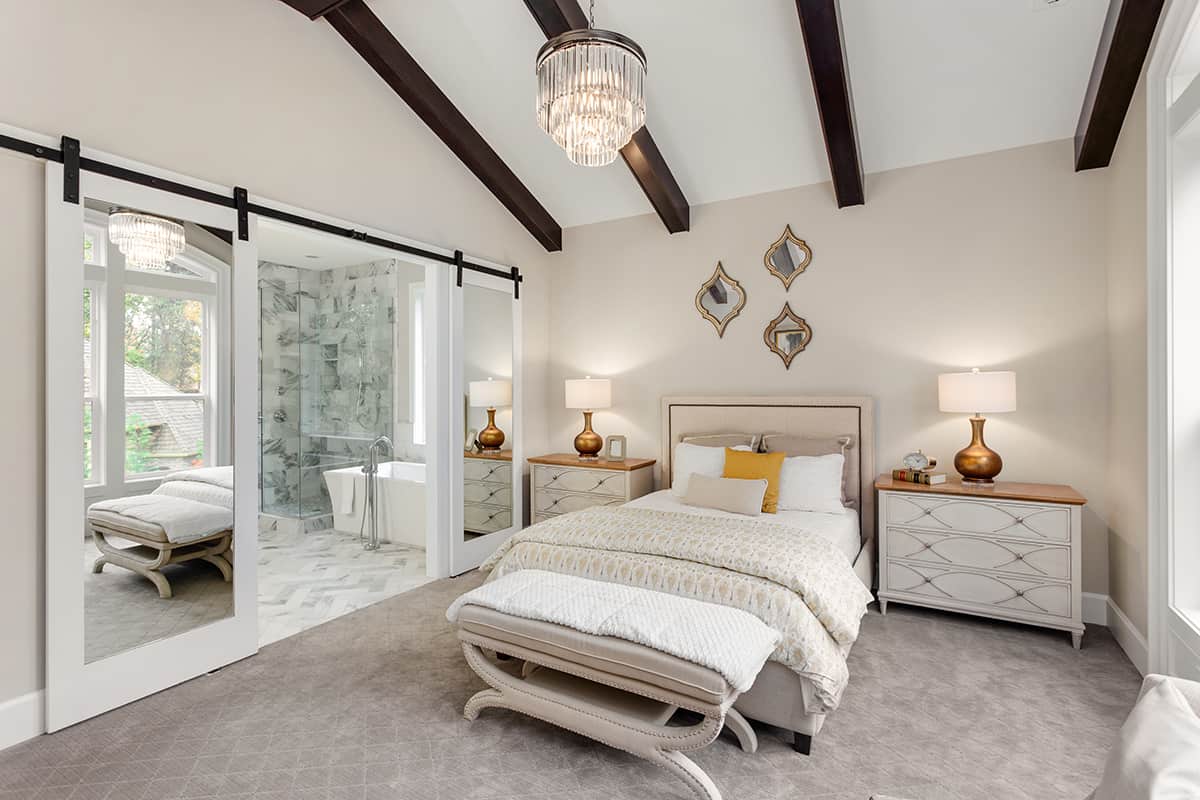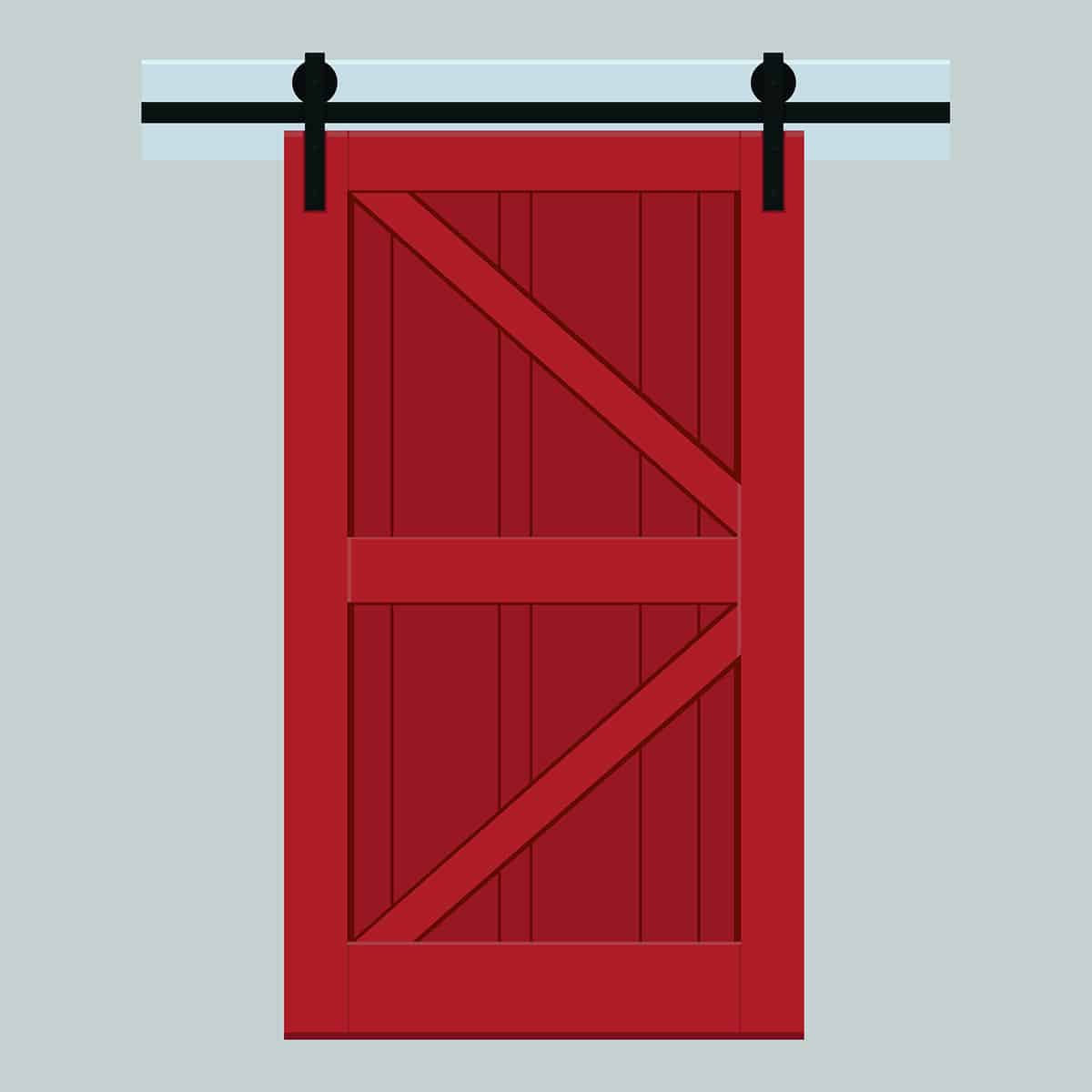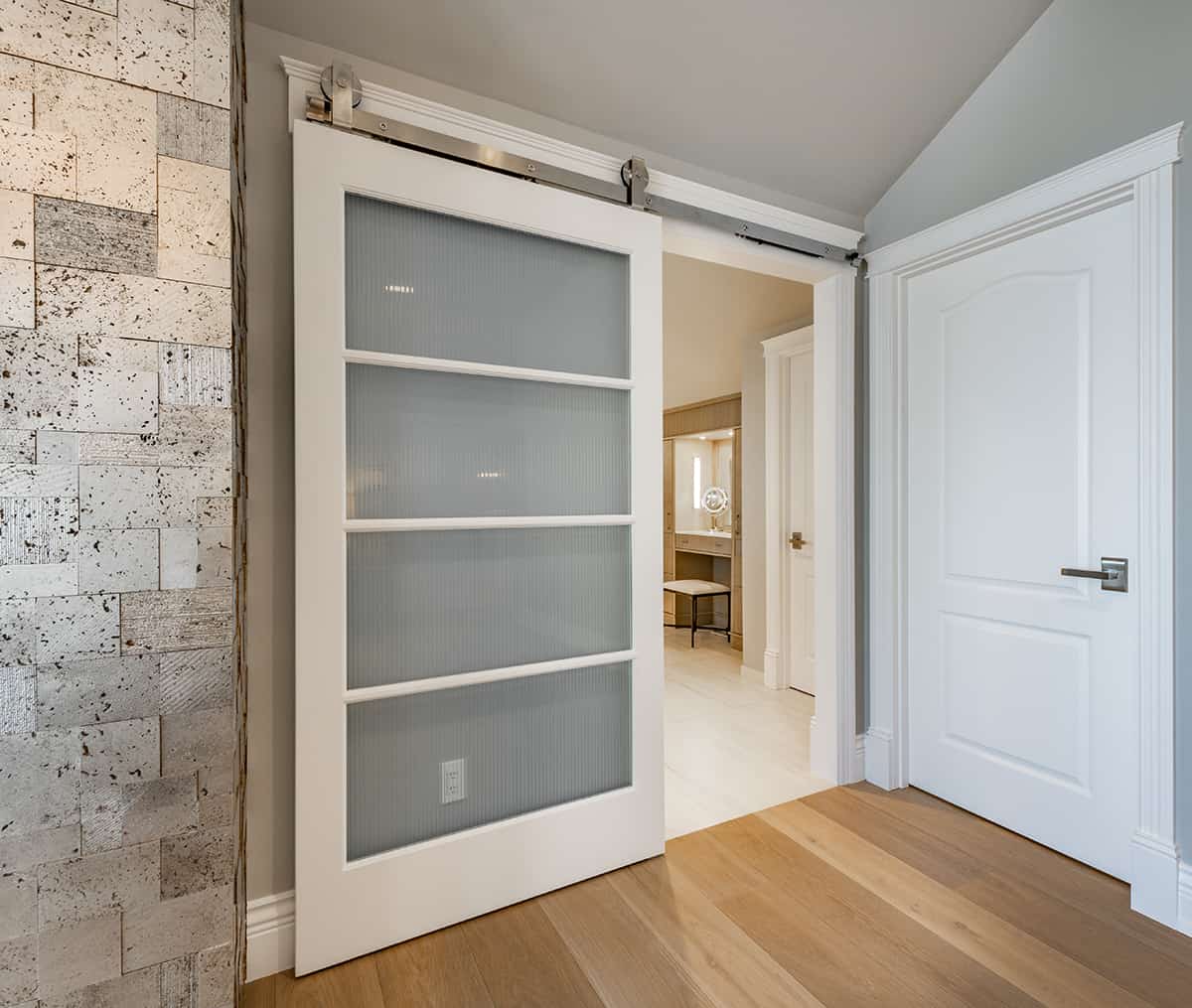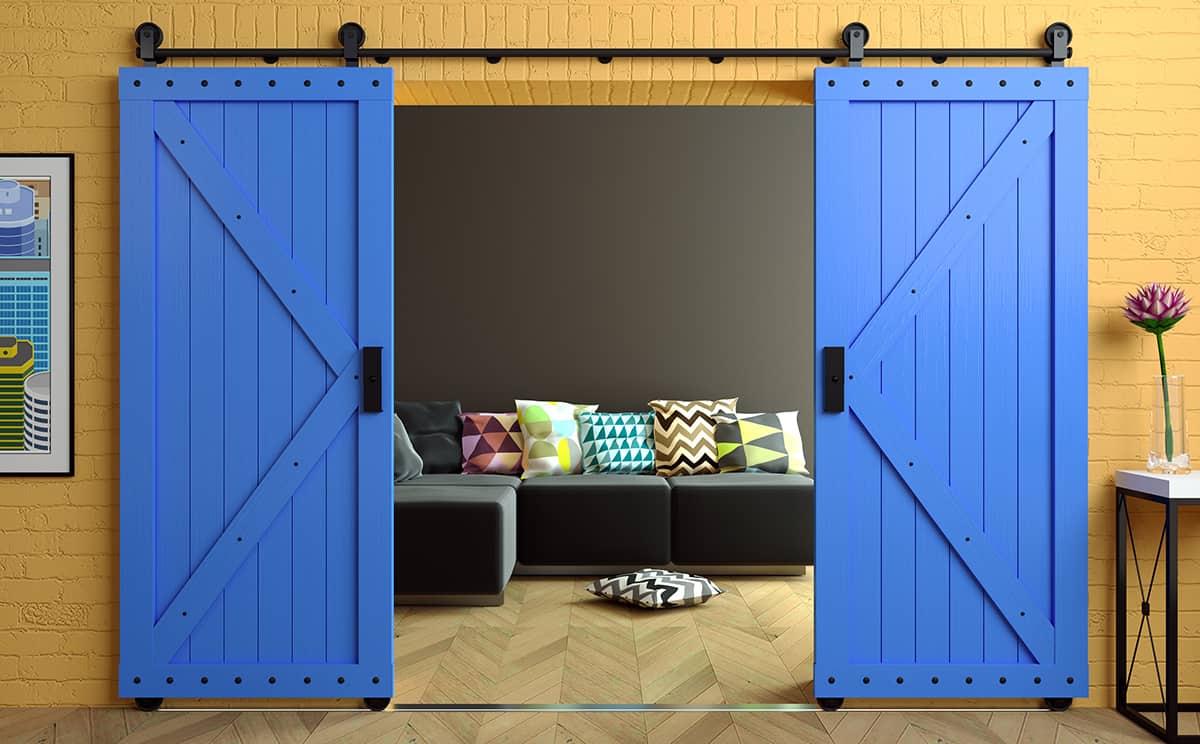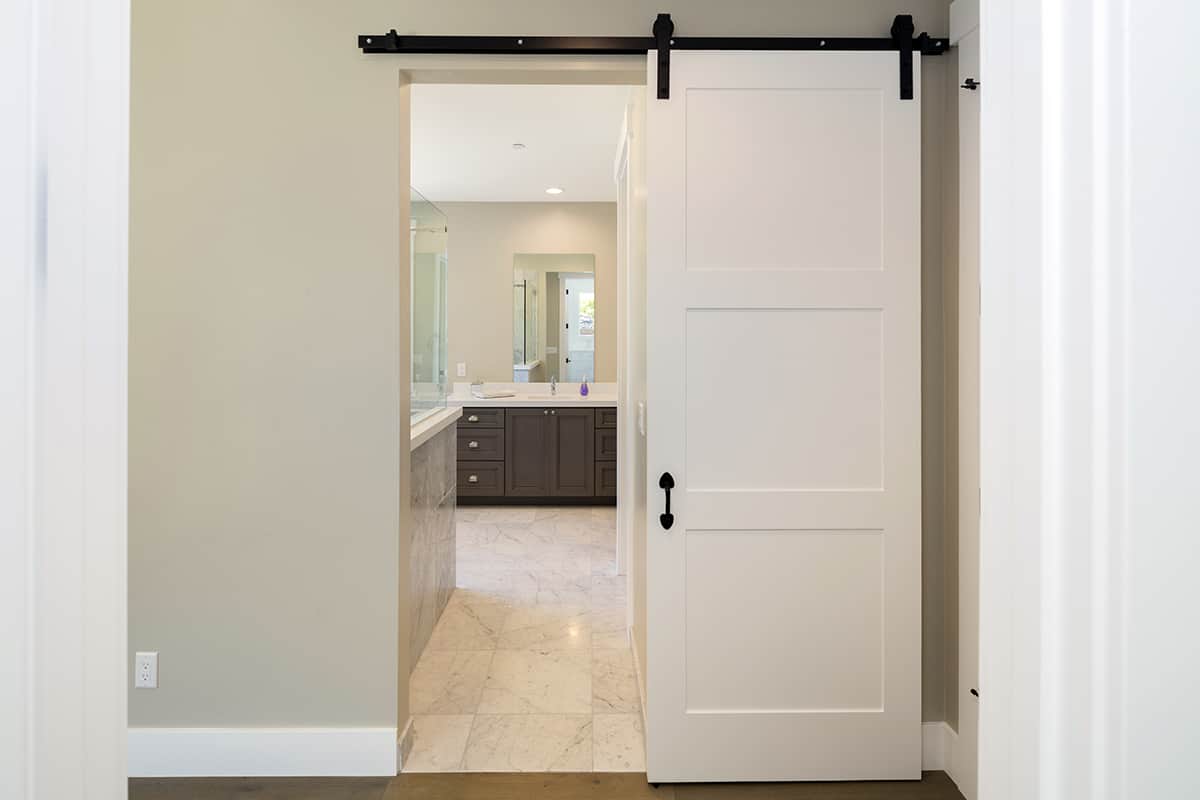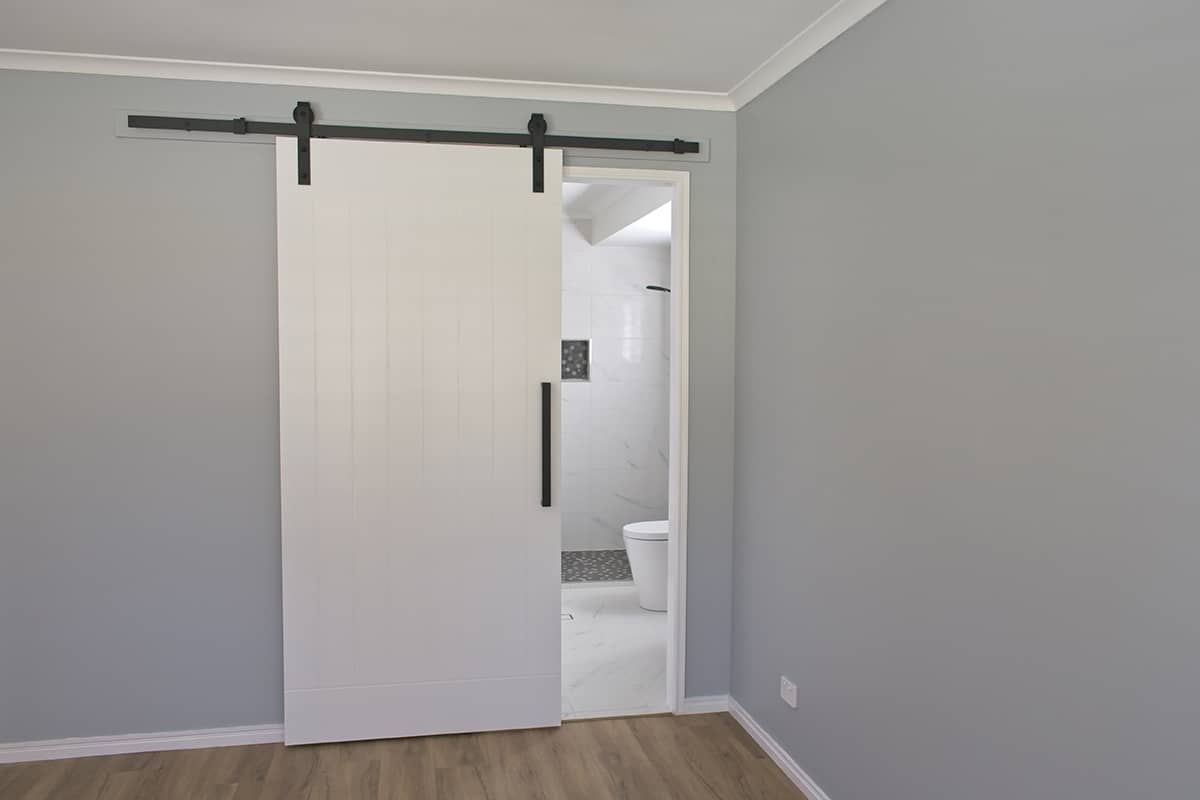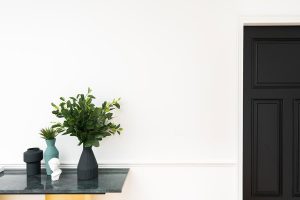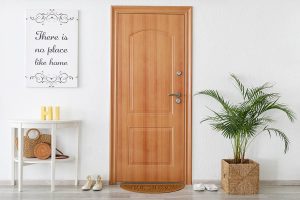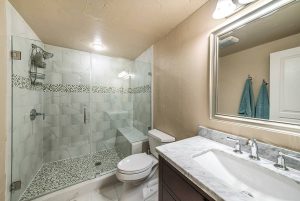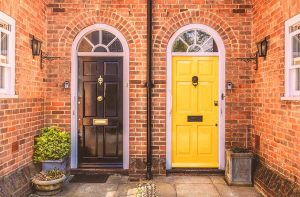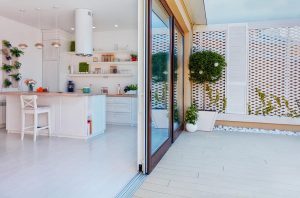Barn doors are a popular feature in homes that many people have as a wishlist item in their dream house. Barn doors are great in both a practical and aesthetic sense, which is why they are so appealing.
If you are installing a barn door or converting a regular doorway into a barn door, then you may not have considered what to do with the existing trim. Here we will look at considerations to think about when planning a barn door installation, including whether a barn door should cover the trim.
Do Barn Door Measurements Include Trim Or Not?
Most designers agree that for a professional and finished look, your barn door needs to cover the trim around the doorframe when it is in a closed position. This means that the width of the door will need to be several inches wider than the doorway itself.
To measure the width of a new barn door, measure from the outside edge of the door trim on one side to the outside edge of the trim on the opposite side. Add 2 inches to your measurement so that the barn door will extend an inch in either direction past the trim.
If the doorway does not have trim, instead measure the opening and add on 4 inches so that the door will extend past the doorway by 2 inches on either side. The height of the barn door should be measured from the floor to the track you are going to install. Typically, the track should be just above the door frame or an equal distance between the door frame and the ceiling.
Mark on the wall with a pencil where the track will be and use this as a guide for your length measurement. Subtract one inch from your total measurement, as this will be required to ensure the barn door doesn’t scrape along the flooring in the room. This will give you your barn door measurements.
Pros of Barn Doors
Space-saving
By far, the biggest practical advantage of barn doors is that they are space-saving. Unlike regular doors that open outwards, barn doors slide along over the nearest wall, so they don’t require any clearance to open them. This makes them a great choice in small rooms where a regular hinged door is going to get in the way.
Sliding doors are often considered a good option for space-saving since they also don’t require clearance; however, the drawback with these is that they operate within a frame, so you can never fully open an entire doorway or closet. By comparison, a barn door is both space-saving, as well as having the capacity to be wide open and cause no obstruction to the doorway.
Visually appealing
Barn doors are traditionally used in barns, but they have succeeded in becoming a trendy architectural feature in modern homes. Many people find barn doors to be visually appealing, and there are so many types that you will be able to find a style to suit your home decor.
A farmhouse-style cottage will look great with a chunky, rustic barn door, while a contemporary minimalist home could benefit from a slender metal or frosted glass barn door.
Easy DIY project
If you like the idea of a barn door, you’ll be pleased to know that installing these is a simple DIY project. Installing a barn door is actually much easier than installing a hinged door, so if you need a doorway and don’t want to hire a contractor, this is a project you should be able to take on yourself.
Cons of Barn Doors
Poor sound barrier
A barn door will not close flush against a door frame or a wall the same way that a hinged door will. Instead, it covers a doorway when in the closed position, without fully enclosing a room.
The issue with this is that sound can easily travel around the edges of the barn door, as there will be a significant gap. This can be annoying in a variety of scenarios. For example, if your kids are playing loud music that you don’t want to listen to, or if you want to create a quiet place for a baby to nap in.
Having a door that does not dampen sounds can also cause embarrassment if you opt to install a barn door as a bathroom door.
Allow light in
Due to the fact that the barn door won’t create a sealed space when it is closed like a regular door will, light can seep around the edges of a closed barn door. This can prove troublesome if you are using a bedroom door to block out light while you sleep or if you want to create a dark space to show a movie during daylight hours.
Noisy
Some people find that barn doors are noisy to operate. They can bang into closed or open positions if they are not handled very gently, which can be annoying.
Difficult to install a lock
It is almost impossible to install a lock on a barn door because of the way that they protrude out from a wall. A latch lock could be a possible option, but you would have to be very careful to ensure the latch doesn’t scratch against the wall when the door is moved from side to side.
The fact that barn doors, for the most part, cannot be locked means that this type of door is a poor choice for a bathroom or a bedroom.
Require a clear wall
When a barn door opens, it slides across the wall it is fitted to and occupies the space in front of that wall. This means that the wall in question needs to be clear at all times; otherwise, the door won’t open.
You cannot install a light switch or plug socket on the wall, and you cannot hang artwork or a shelf on the wall. You also cannot place furniture in front of the wall.
